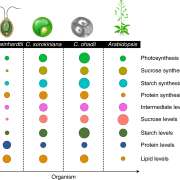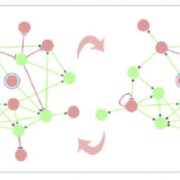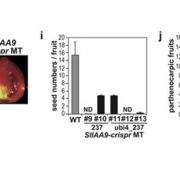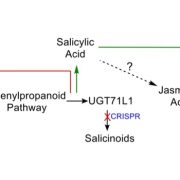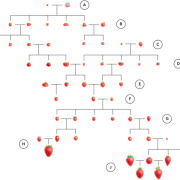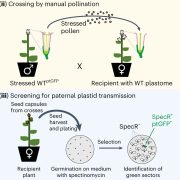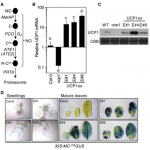Metabolomic selection for enhanced fruit flavor (PNAS)
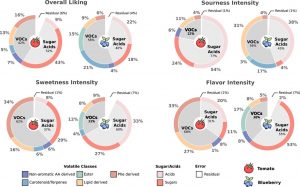 Breeding for flavor in fruits and vegetables is a dauting task. For several years, scientists have relied on consumer panels and instrumental analysis to make judgment calls on the flavor phenotype to select for during a breeding process. While these methods are often accurate and reliable, they are rigorous, costly, time-consuming, and difficult to scale to large breeding programs. But what if artificial intelligence could use metabolomic information to predict for flavor, just like genomic selection uses genomic information to predict complex traits? Here, authors Colantonio et al. used a combination of chemical and sensory information of tomato and blueberry to train machine learning models to predict how consumers will like the fruit. They evaluated different metabolite (sugar, acid, and volatile organic compounds) contributions to flavor and employed 18 statistical and machine-learning methods for accuracy in predicting these sensory traits. They show that sugars/acids are the main predictors of consumer liking and preference in blueberries, while volatile compounds contribute most to consumer flavor perception in tomatoes. Furthermore, they observed that machine learning tools are better predictors of flavor phenotypes compared to genomic selection. This work will help increase the efficiency of flavor phenotyping, and enable breeders to introduce flavor traits in the early phases of their breeding programs. Ultimately, it will facilitate the development of high-quality fruits and vegetables for consumers. (Summary by Modesta Abugu @modestannedi) PNAS 10.1073/pnas.2115865119
Breeding for flavor in fruits and vegetables is a dauting task. For several years, scientists have relied on consumer panels and instrumental analysis to make judgment calls on the flavor phenotype to select for during a breeding process. While these methods are often accurate and reliable, they are rigorous, costly, time-consuming, and difficult to scale to large breeding programs. But what if artificial intelligence could use metabolomic information to predict for flavor, just like genomic selection uses genomic information to predict complex traits? Here, authors Colantonio et al. used a combination of chemical and sensory information of tomato and blueberry to train machine learning models to predict how consumers will like the fruit. They evaluated different metabolite (sugar, acid, and volatile organic compounds) contributions to flavor and employed 18 statistical and machine-learning methods for accuracy in predicting these sensory traits. They show that sugars/acids are the main predictors of consumer liking and preference in blueberries, while volatile compounds contribute most to consumer flavor perception in tomatoes. Furthermore, they observed that machine learning tools are better predictors of flavor phenotypes compared to genomic selection. This work will help increase the efficiency of flavor phenotyping, and enable breeders to introduce flavor traits in the early phases of their breeding programs. Ultimately, it will facilitate the development of high-quality fruits and vegetables for consumers. (Summary by Modesta Abugu @modestannedi) PNAS 10.1073/pnas.2115865119


